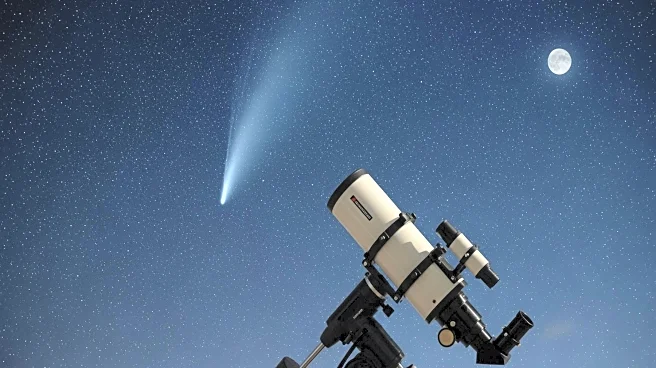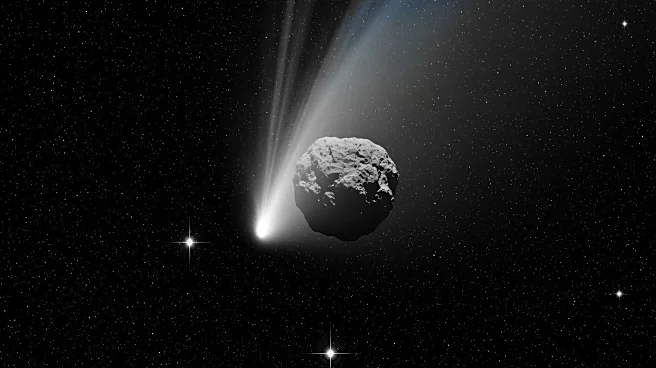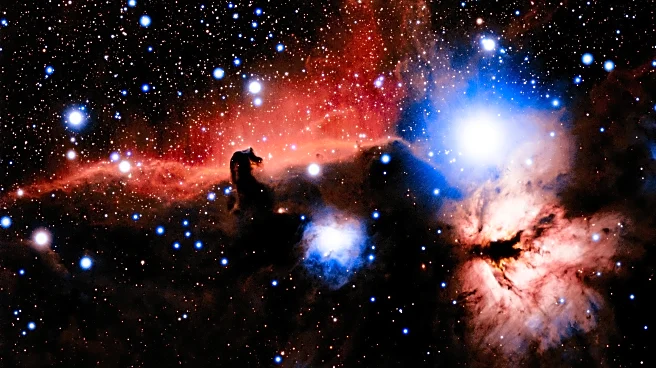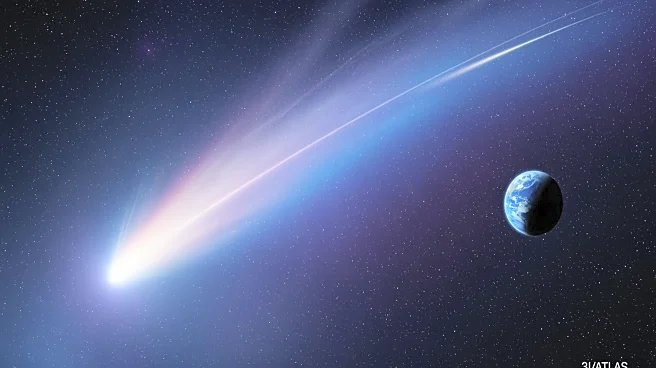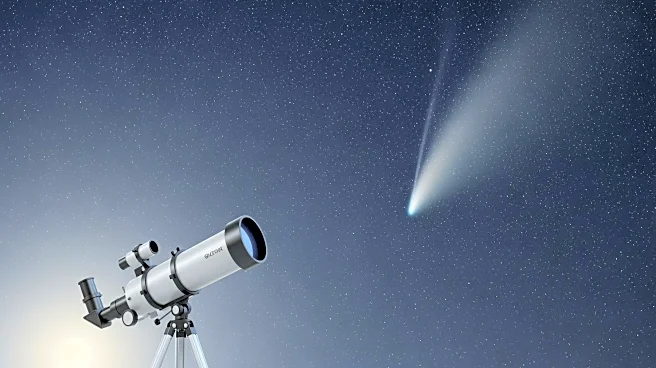What's Happening?
Comet 3I/ATLAS, an interstellar object, has reappeared from behind the sun and is now visible from Earth. Using the Lowell Observatory's Discovery Telescope in Arizona, astronomer Qicheng Zhang captured
the first optical images of the comet post-perihelion. The comet, which is only the third interstellar object ever recorded, is traveling through the solar system at speeds exceeding 130,000 mph. It briefly disappeared from view as it passed close to the sun, reaching its closest point, known as perihelion, on October 29. Despite being obscured by the sun, researchers continued tracking its path using space telescopes. Zhang's observations suggest the comet underwent rapid brightening ahead of perihelion, possibly due to gas emissions. The comet is now visible using amateur telescopes across much of the Northern Hemisphere, appearing as a faint smudge in the sky.
Why It's Important?
The visibility of comet 3I/ATLAS provides a unique opportunity for astronomers to study an interstellar object, which could offer insights into the composition and behavior of comets from outside our solar system. Understanding the makeup of such objects can enhance knowledge about the formation and evolution of celestial bodies in the Milky Way. The comet's rapid brightening and unusual trajectory may reveal new information about the effects of solar radiation on interstellar objects. As the comet moves away from the sun, researchers can study its sublimation process, which could shed light on its origins and age, potentially making it one of the oldest comets observed.
What's Next?
As comet 3I/ATLAS continues to rise from the sun, it will become increasingly visible, allowing more telescopes worldwide to observe it. This period is crucial for gathering data on the comet's composition and behavior. Researchers anticipate a surge in studies and observations, which could lead to significant discoveries about interstellar comets. The comet's trajectory and interaction with solar radiation will be closely monitored to understand its long-term effects and potential transformations. The scientific community is expected to publish new findings as more data becomes available.
Beyond the Headlines
The study of comet 3I/ATLAS may challenge existing theories about interstellar objects and their interactions with solar systems. The comet's potential age and exposure to space radiation could provide insights into the conditions of the early universe. Additionally, the comet's journey through the solar system might influence future space exploration missions, as understanding its trajectory and composition could inform navigation and safety protocols for spacecraft encountering similar objects.
